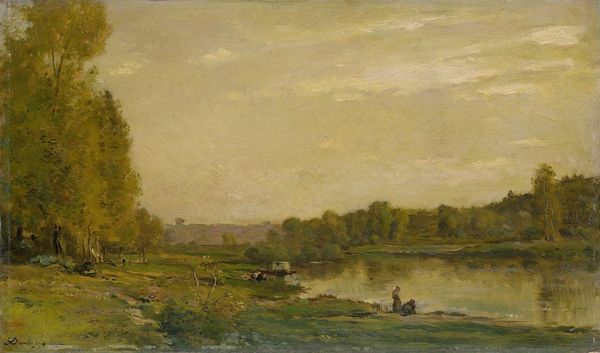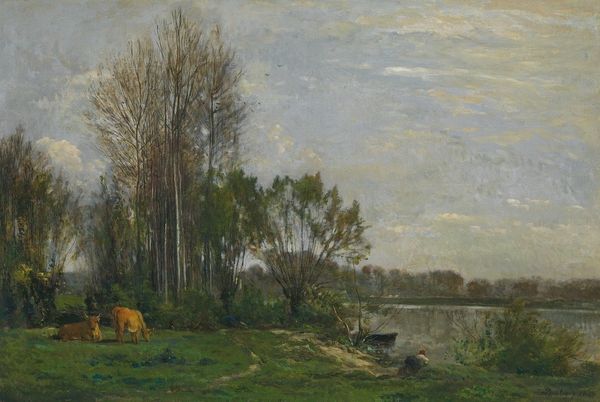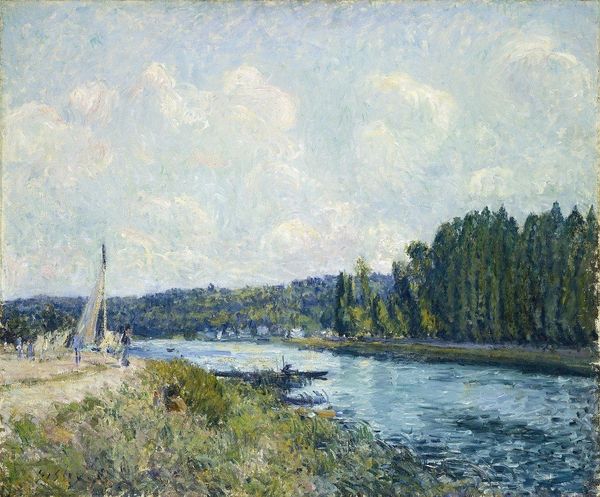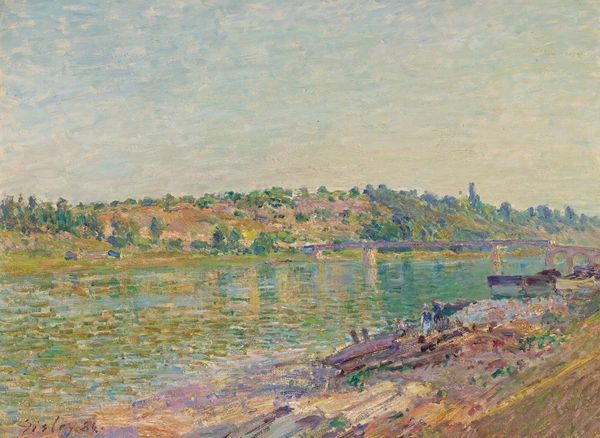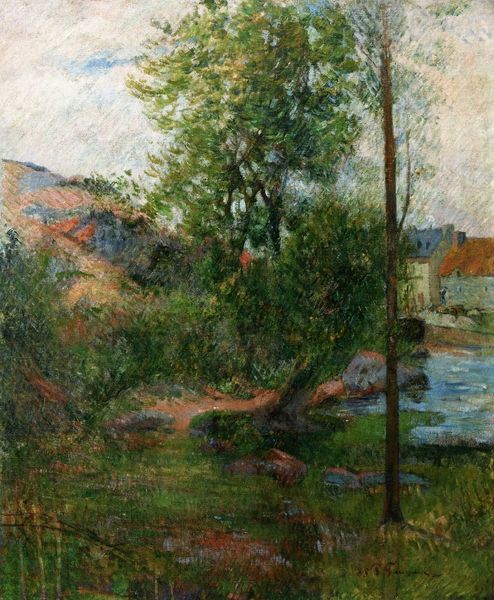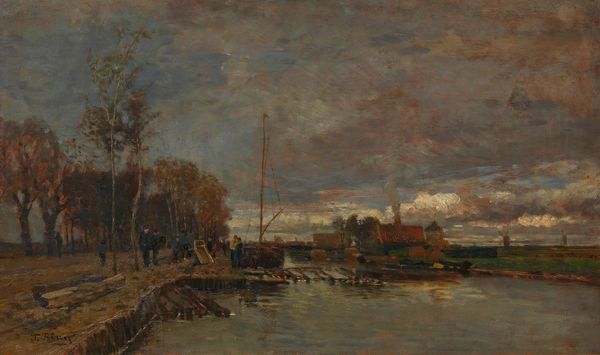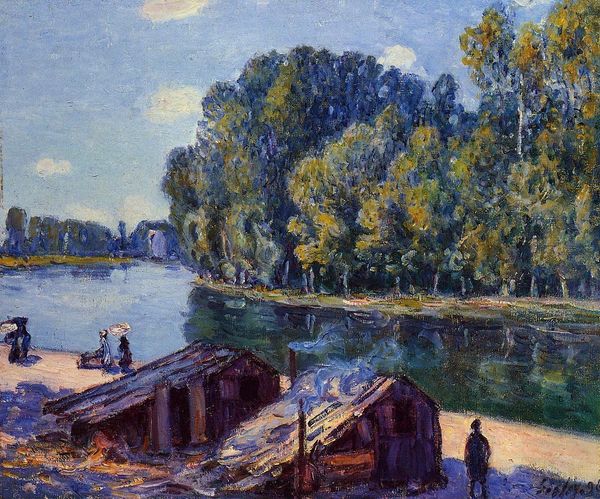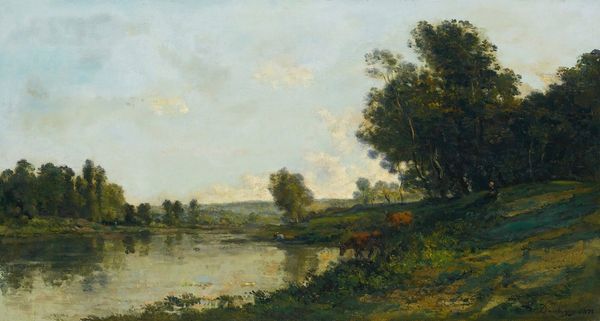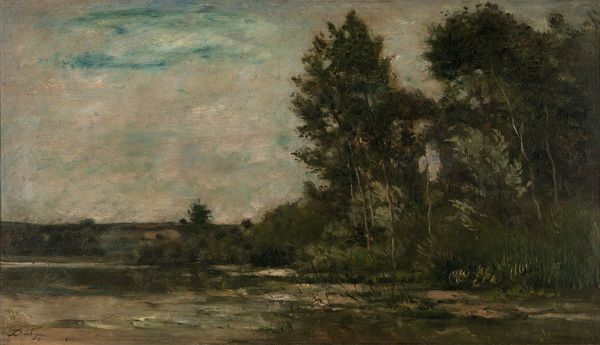
painting, plein-air, oil-paint, impasto
#
painting
#
impressionism
#
plein-air
#
oil-paint
#
landscape
#
impressionist landscape
#
nature
#
oil painting
#
impasto
#
genre-painting
Copyright: Public Domain: Artvee
Editor: This is "Lavandières près de Champagne" by Alfred Sisley, created in 1879. It's an oil painting that really captures the overcast mood of a riverside scene with women washing clothes. What do you see in this piece, looking at it through a symbolic lens? Curator: What strikes me is how Sisley positions these washerwomen, not just as figures in a landscape, but as almost totemic, connected to the very pulse of the river. Water, of course, is a potent symbol of purification and renewal across cultures. Washing isn't just about cleanliness; it's a ritual of sorts. Editor: So, the act of washing carries a symbolic weight beyond the everyday task? Curator: Precisely. Consider the backbreaking labor involved, represented by the stooped postures of the women. This can symbolize resilience and the continuous cycle of life. The landscape, with its serene yet melancholic tone, echoes their labor. Do you notice any other subtle details which amplify the narrative? Editor: Now that you mention it, the cloudy sky feels significant – it’s not a bright, sunny day but rather muted tones that blend. Perhaps that evokes the constant, often unseen, efforts of these women. Curator: Excellent observation. The overcast sky diminishes any sense of grandeur, grounding the scene in a quiet reality. This everyday activity, rendered with such painterly attention, elevates the mundane to the level of enduring human experience, making the work truly memorable. Editor: That makes me appreciate the painting much more, thinking about it in terms of cycles, resilience, and understated symbolic power. Curator: Indeed, the cultural memory embedded within images shapes our perceptions. Each glance reveals fresh layers of meaning.
Comments
No comments
Be the first to comment and join the conversation on the ultimate creative platform.
